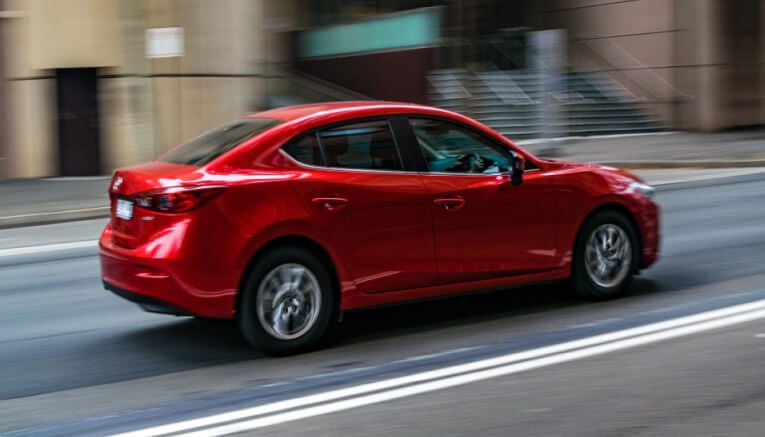A key financial issue that bears close watching by many companies and their employees, as well as entrepreneurs, contractors, freelancers, and rideshare drivers, is the IRS standard mileage rate for 2020. Not yet published for the upcoming year, the annual mileage reimbursement rate helps organizations determine how best to reimburse their employees.
It also helps individuals determine what mileage rate to include when filing their taxes. The mileage reimbursement rate was never intended to be a reimbursement rate for companies, per se, by the IRS.
Instead, it was established to act as a cap for companies. In other words, any money paid to employees above this rate becomes taxable income for the employee. In order to avoid this from happening, employers can reimburse up to the rate per mile.
In 2019, the rate is 58 cents per mile. Sole proprietors can use that same rate when calculating expenses incurred when running a small business, including driving for Uber. To prepare for the 2020 reimbursement rate, those impacted should keep several things in mind.
The Rate Will Only Change Slightly
If one reviews the mileage reimbursement rates published by the IRS over the last ten years, it’s easy to see that there have been slight changes each year. Since the rate in 2010 was 50 cents and the rate in 2019 is 58 cents, it stands to reason that the 2020 rate would remain in the same ballpark as this year’s rate.
It’s also worth mentioning that the rate does not always increase. For example, the rate per mile decreased between 2013 to 2014 and then again between 2015 and 2017.
What is virtually certain is the rate will likely not be significantly different from this year’s rate. There are different rates for medical or moving purposes (20 cents per mile) and driving in service of charitable organizations (14 cents per mile).
These rates may change as well with the new 2020 standards. Until the IRS publishes those new rates, employers and sole proprietors can easily continue to use 2019 rates for your 2020 taxes without being totally off the mark.
Changes From Recent Tax Cuts
When the U.S. Congress passed the Tax Cuts and Jobs Act (TCJA) that went into effect in 2018, a major impact on employees and was a change to incurred business expenses. In other words, “tax payers can longer claim a miscellaneous itemized deduction for unreimbursed employee travel expenses,” according to the IRS.
While this does not impact sole proprietors, this is very meaningful for individuals whose employers do not have an expense reimbursement plan in place. This means employees can no longer deduct those miscellaneous expenses on their personal taxes but can still deduct mileage expense.
If an employer has not established such a plan for impacted staff, they should consider doing so, along with implementing a comprehensive mileage reimbursement plan. This could result in meaningful savings for both the employer and the employee.
It’s worth noting that employees are also no longer able to deduct moving expenses related to relocating for a job. It’s true that mileage expenses related to driving is still eligible (at 20 cents per mile) but nothing else is allowable. The exception includes members of the armed forces on active duty and moving to a permanent change of station under orders.

Other Ways To Reimburse Drivers
Some companies address reimbursing employees who drive with a comprehensive approach. The standard business mileage rate does not cover all expenses related to vehicle operations.
It is only an estimation. An alternative is to reimburse employees based on the actual costs associated with operating a vehicle.
There are many considerations if taking this approach, as costs can include everything from fuel, maintenance, insurance, payments and more. Although this method may be more beneficial for some companies, it does require a significant amount of math and paperwork.
Most companies choose the mileage reimbursement method because it’s much simpler for the employee and employer. Instead of tracking every expense from the auto repair shop, car wash and oil change facility, mileage expense is designed to reimburse for those costs.
Sole proprietors must make a decision to either deduct the expenses associated with operating their vehicle for business purposes or use the mileage deduction. They cannot use both.
Making Mileage Reimbursement Easier
Companies and sole proprietors are in business in order to attract customers, make sales and generate revenue. While responsibilities such as mileage tracking/reimbursements are important for tax purposes, it takes away valuable time and focuses away from the core activities of any organization.
Companies and individuals that streamline and automate this activity can spend more time generating revenue and less time doing paperwork. With the new IRS standard mileage rate to be published soon, companies, employees, independent contractors, and other impacted individuals should understand and prepare for its impact.
The ideal way to handle mileage reimbursement is to use a company mileage tracking app like TripLog. Employees, entrepreneurs, independent contractors, freelancers, and rideshare drivers can conveniently track their mileage using our iOS and Android app.
Especially, during changes in regulatory rates, you can be sure to have TripLog’s mileage tracker app updated with the latest changes so you can plan ahead and stay compliant. In addition, automatic tracking and accurate logs will save time, minimize errors/fraud as well as make the process less cumbersome for everyone involved.
[mc4wp_form id=”9800″]









